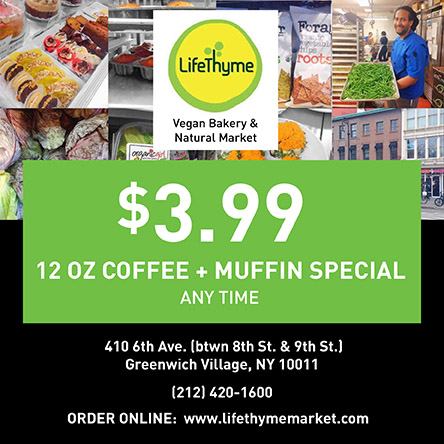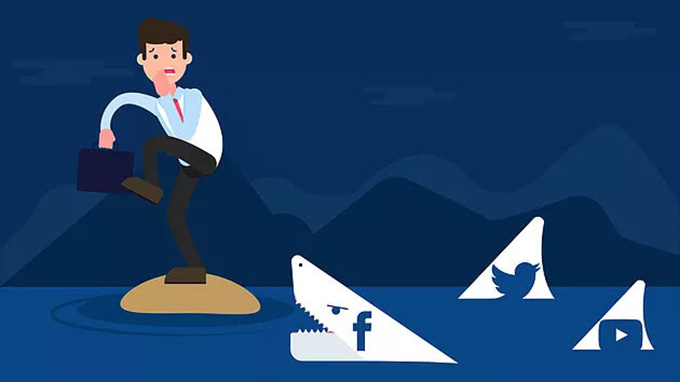When I first moved to New York City in the Summer of 2017, wide eyed and ready to take on the world, I was ill equipped for the stressful, constant movement and the expectations that the city enforces upon its youth. A freshman with an intense romantic passion for literature, philosophy, and religious studies at The New School, I immersed myself in as much school reading and classwork that I could; after all, I had never had such resources available to me before. The stimulating content on one shelf alone in the List Center library was overwhelming; who knew there could be so many books under Queer New York Literature? Even though I had visited the city often and had lived with my family in nearby New Jersey, the city always thrilled me to no end both on paper and in the real world. As a bibliophilic child, I had grown into a romanticist who wanted nothing more than to experience the streets that Patti Smith had called her stomping grounds, that Joan Didion had marked a perishable dream, and that James Baldwin had portrayed time and time again. Even Percy Jackson had fought his most gruesome battles in the city streets! I needed to make the city my own now. Meanwhile, an idealistic mentality drove me to further excel in my classes because I understood that my time in such an institution and location was a privilege and something I wanted to be proud of when I reflected back on my time spent there. Located just on the border of the East and West Village, The New School gave me the opportunity to walk around the neighborhoods I had once merely read about, to experience the freedom that I did not realize I craved so badly. And best of all, to create my own legacy beyond the pages I had already read.
And then came the burnout from classes. By the time midterm season rolled around, I was exhausted from spending time in the library hunching over my laptop to write papers. I could not blame anyone but myself, for my hunger for literary excellence forced me into perfectionism and my drive to experience everything all at once left me terribly overstimulated. I needed a break from the rush of student life in New York. It did not help that once I stepped out of the University Center on 13th and fifth ave, I was hit with the scramble of New Yorkers moving on with their own lives. How could I deal with this mad rush without being holed up in my freshman shoebox dorm room? It was midterm season and there was no time to revel in this so-called “self-care” that I heard whispered around by students and faculty alike. Or was there?
This was the year that I discovered the quieter side of New York; the lush green of city parks, new neighborhoods, and the realization that I could step back and still feel like a participant of city life.
Taking Advantage of Green Spaces
One of my favorite relaxing after class activities was to visit the dog park in Washington Square, just a few much-needed steps away from the jumping atmosphere of the main square. As the sun began to set following a tiresome day in the library or a particularly heated debate in the classroom, I would find myself tucked into the back right of Washington Square watching the dogs frolic in their own designated space. As a student, it is almost impossible to have a dog in a shoebox apartment or communal dorm and as a dog person, this space is the next best thing! One of my close friends would often text me after she got out of class on a particularly anxious day to meet her at the dog park so that we could sit together and watch the puppies for a while while we cleared our heads. Afterwards, try having a late lunch or hot drink at the famous Cafe Reggio, home of the original cappuccino and just steps away on MacDougal Street or getting ice cream on that same street at Van Leeuwen.
My favorite park to relax solo in has always been Central Park. Relaxing alone is important for my self care regime, as it allows me to sit with my thoughts before I journal my feelings in order to relieve stress. Never ignore your feelings, this can lead to a build up of anxiety that will be difficult to relieve all at once later on. When you are overworked from school, it is okay to admit when you are at your limit and need a break or some alone time! The key to finding the perfect secluded location to enjoy my own company is proximity to water. Wildlife like ducks and remarkable birds are more likely to inhabit areas that are not oversaturated with people and that have natural resources like streams and lakes. If you forgot your blanket, don’t worry! The best location for sitting and enjoying your book on a bench would be The Pond, which is just a short walk away from the Fifth ave and E. 59th street Central Park entrance, right across from the famous Plaza Hotel. The Plaza Hotel also has a food court in the basement, which is open to the public! Even on cool afternoons, this location is ideal because it is not too secluded so as to feel lonely, nor is it overpopulated. There is also a tiny bridge that you can take photos from with the New York city skyline behind you! I have spent many afternoons reading The Goldfinch by Donna Tartt here to clear my mind after a busy school week.
If you would rather sprawl out on a blanket and are located further uptown, I recommend the Harlem Meer, which is located just off of the 2 and 3 train 110th street subway stop. There is both a perfect mix of bench seating and grass that surrounds the peaceful lake. Here you can even find turtles swimming in the water! I loved to run through the park starting in this location because it affords me the fulfilling view of a calm landscape that eases me into my daily jog. When you want to sit and relax, there are wonderful, well maintained spots to sit in the grass and enjoy the day!
City Walks
New York city is also the perfect location for people watchers! Whether it be to gain writing inspiration or even just to wind down, people watching is a fantastic pastime for me in the city. Try walking around a new neighborhood to see different things; soon you will be able to tell the different communities that are present all across the city. While I was living on the upper east side as a student from my sophomore to junior year, I loved walking down Madison Avenue to people watch and window shop. This allowed for socialization as I was still immersed in city life while not necessarily forcing myself into social situations. As someone who creates best in their alone time, city walks like this have been particularly healing to me on stressful days and has helped me gain inspiration for my fiction writing. When you need to take a rest, try the Great Lawn just behind the Metropolitan Museum of Art on 86th street. In the summertime, the Delacorte Theatre, which is located a few paces away, hosts free Shakespeare in the Park events!
___
Overview:
- Find some alone time amidst the rush of constant city activity to decompress after classes!
- Try: the dog park in Washington Square, The Pond and Harlem Meer in Central Park.
- Stop by Cafe Reggio and Van Leeuwen after a day in Washington Square.
- Have a meal at the Plaza Hotel Food Court before going to The Pond.
- Take city walks and discover new neighborhoods for both inspiration and to unwind!
- Try: walking down Madison Avenue before visiting the Great Lawn and Delacorte Theatre.
These are just a few examples of places I like to go when I need to slow down after a grueling day as a New York city student. Eventually, you will be able to find which neighborhoods you like the most, thus opening up new communities for you to discover and be a part of!
____________________________________________________________________
Helisoa Randriamanana is an aspiring writer, academic, and recent Spring 2021 graduate of The New School with a BA in literary studies and a double minor in philosophy and religious studies. She is interested in jump starting a career in the world of book publishing and most of her work, both fiction and non-fiction, reflects the humanist philosophy of Emmanuel Levinas.








